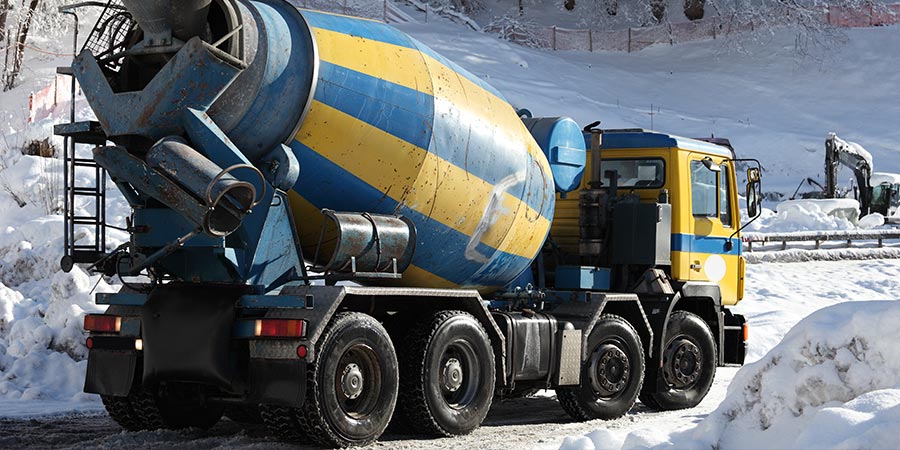Cold Weather Concreting Practices

Cold Weather Concreting Practices
Building in the wintertime can involve special considerations, particularly when it comes to pouring concrete in cold weather. It’s imperative that the concrete is protected from freezing until it has attained a compressive strength of at least 500 psi (3.5 MPa), which is about two days for most concrete maintained at 50°F (10°C). Otherwise, it slows down the strength gain of the concrete.
Fortunately, there are some basic steps you can take to protect the concrete. Concrete that is protected properly will reach its potential strength and retain this strength, despite subsequent exposures to cold weather.
- Keep an eye on the temperature. As the temperature drops, so does the rate of cement hydration, which slows the rate of strength gain of the concrete. When a specified concrete strength must be attained on some schedule, concrete placement and curing temperatures should be followed in accordance with concrete specifications in your region.
- Prepare the site. Remove any snow or ice from the concrete forms or sub-grade and ensure that any surfaces that will be in contact with fresh concrete are at a temperature that cannot cause early freezing or seriously retard the setting of the concrete.
- Consider using hydronic systems. In some cases, you may choose to heat the area by moving warm water and glycol through a piping system. This can thaw and heat subgrade areas prior to placement and provide heat while curing the concrete.
- Use enclosures. Temporary enclosures around the working area can be used to protect against the elements. The enclosures should be heated prior to concrete placement to protect against excessive cold, while the concrete is being placed and cured. Be sure the heater doesn’t blow directly on the concrete, as this can cause overheating or drying. Also, ensure that the heater is vented to the outside to protect workers from carbon monoxide gas and fumes, as well as protect the concrete from carbonation.
- Place concrete at lower than normal slumps. This will minimise bleeding and set delays. Protection and curing should start immediately after concrete placement.
- Cover the concrete. If you are not using a heated enclosure, you can use insulated blankets or mats, polystyrene insulated boards, or straw covered with plastic sheets to protect the concrete during curing. These methods rely on the heat of cement hydration to maintain an adequate temperature.
- Avoid large temperature shifts. When removing protection, be careful not to thermally shock the concrete by allowing too great a drop in the temperature during the first 24 hours after the end of the protection period.
Employing water reducing admixtures, such as CONCERA™ admixtures for control flow concrete, can reduce cracking due to lower water/cement ratios and provide additional benefits such as placement with minimal vibration.
Learn more about Concera™ for control flow concrete
標籤 (Tags)
- CONCERA™
- Cement production
- Concrete
- Concrete admixtures
- Engineer
- Structural Solutions
